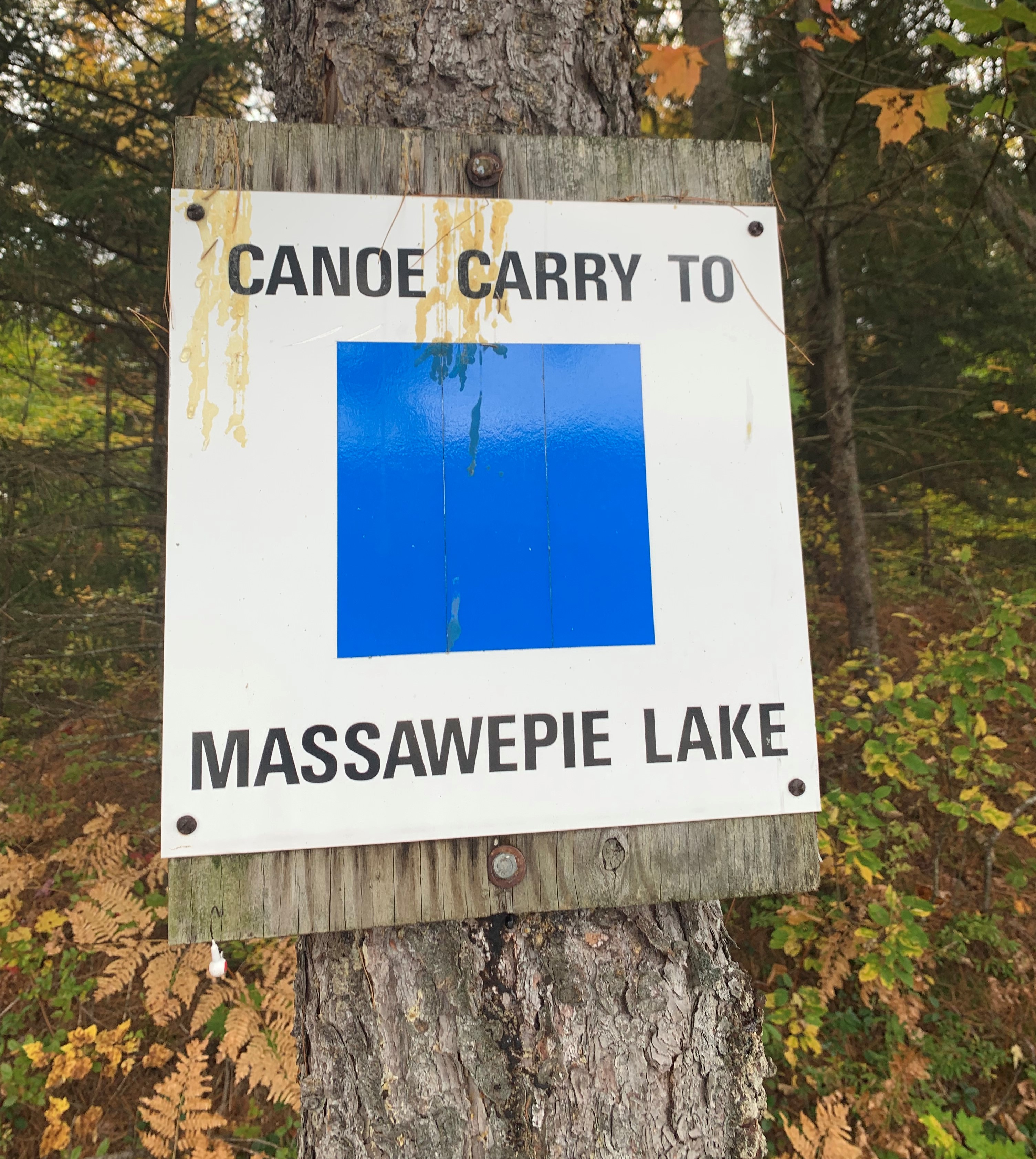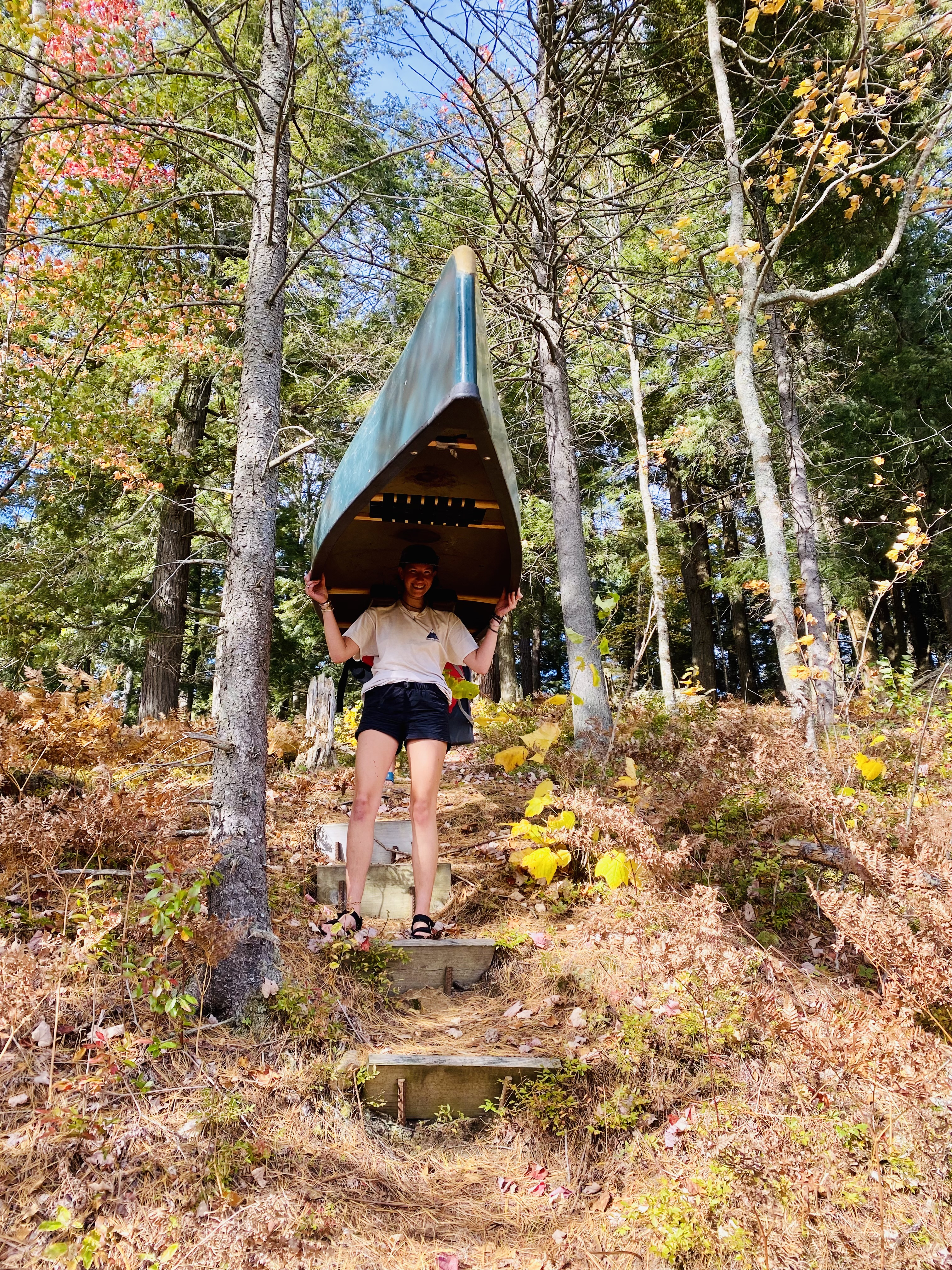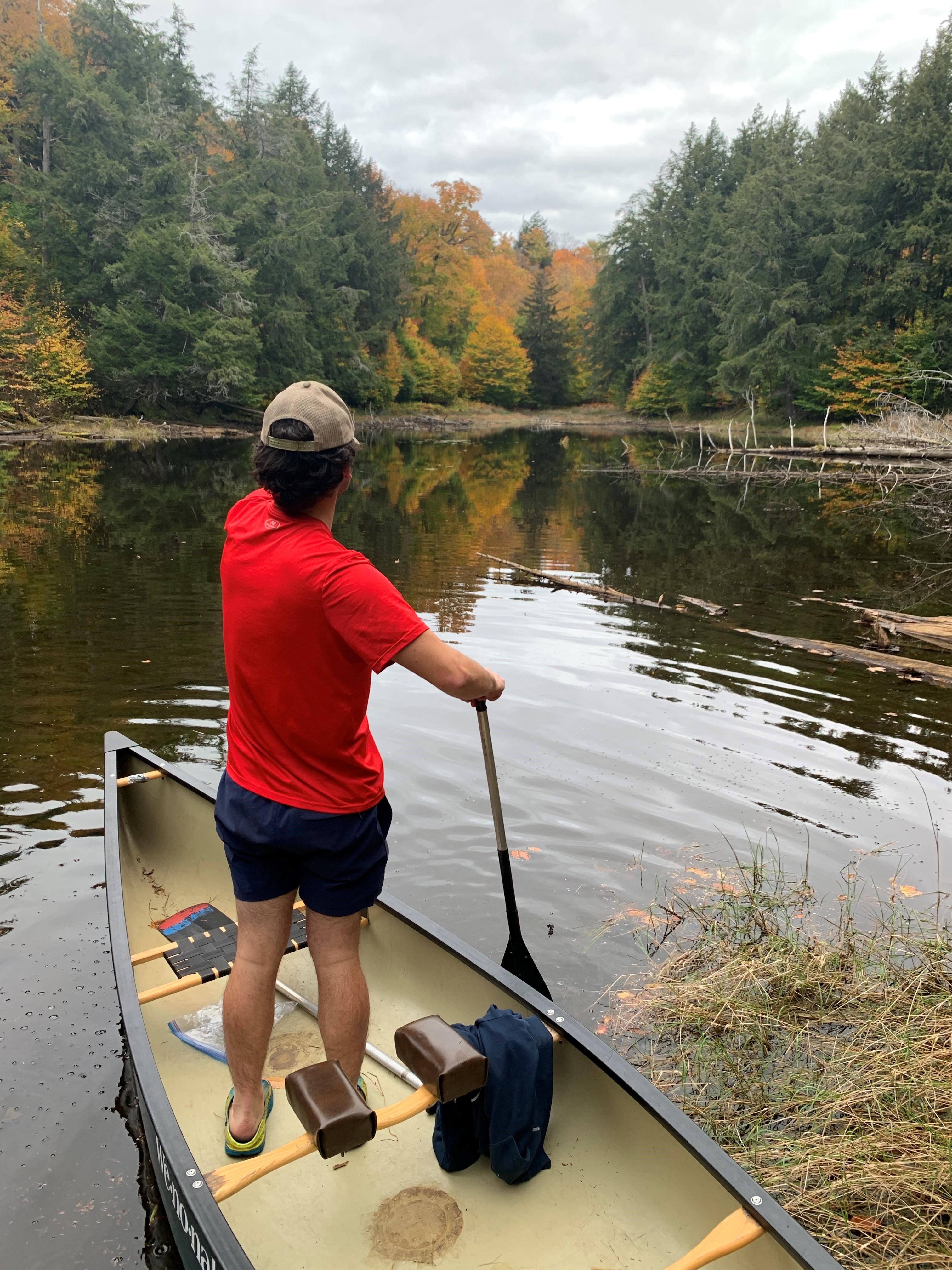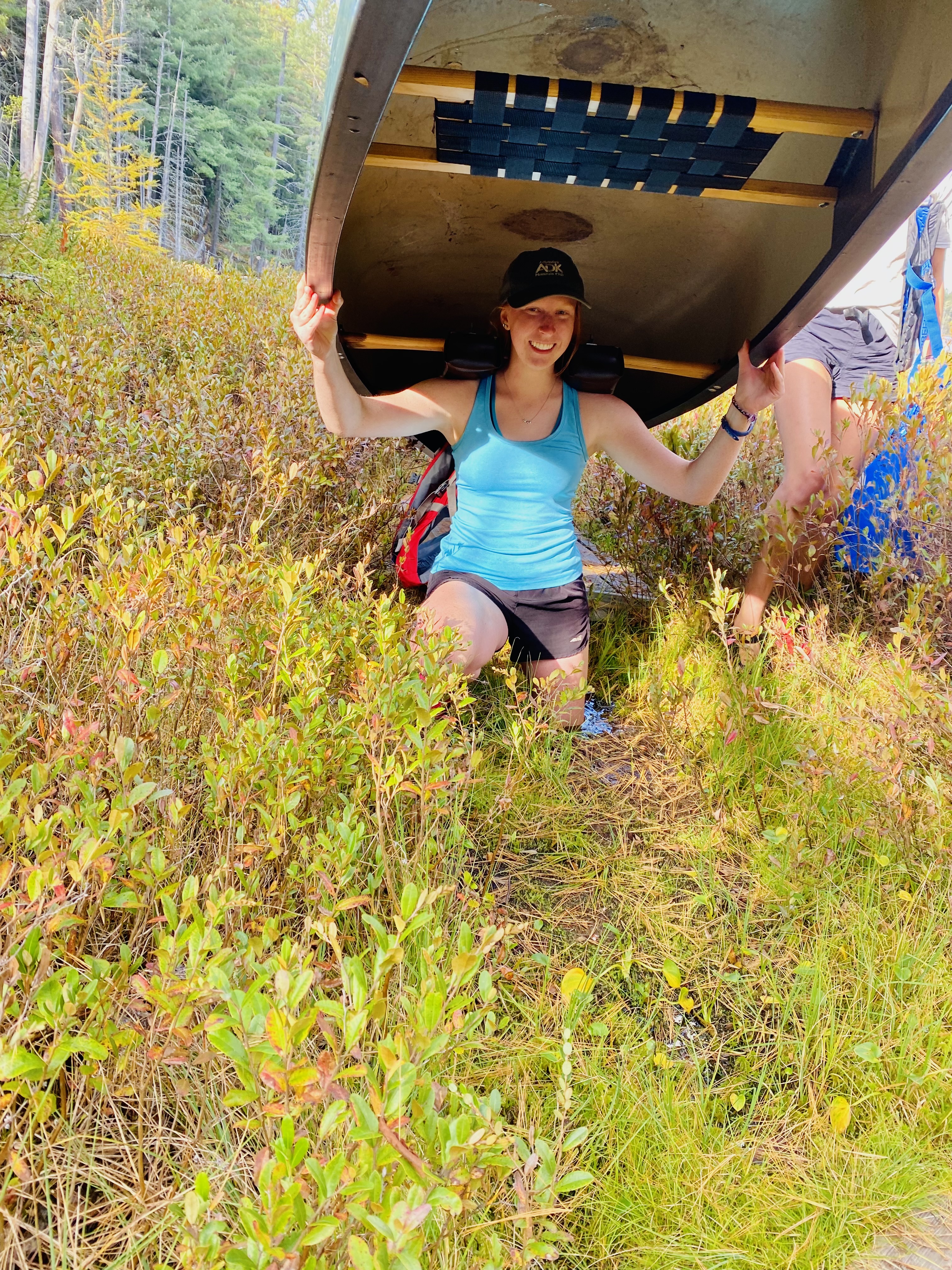The Massawepie Nine
By Sage Lalor & Lauren Gulbicki
We sit on the hard floor of the Four Points lean-to, a campsite not too far from Arcadia. The three of us are huddled over a map of the Massawepie property. It’s early on the Sunday morning of our mid-semester break. Mist rises in the bay in front of us, matching the vapor from our breath. We orient our map to the North and shoot a bearing for Lost Pond, a body of water only accessible by bush-whacking.
“Looks like it’s 340 degrees Northwest!” Kai eagerly reports.
“Let’s scout out a route first and then come back for the canoe,” Sage suggests.
This year, keeping safety in mind, the Arcadians made the difficult decision to stay put for mid-semester break due to COVID concerns. The three of us—Kai, Sage, and Lauren—decided to take advantage of this extra time to explore. We set the goal of paddling and exploring all nine ponds on the Massawepie property within one weekend, naming this inaugural challenge the “Massawepie Nine.” The three of us decided to venture to the northern ponds first, leaving behind Lake Massawepie to find Catamount, Round, Long, and Horseshoe. On the second day, we made our way south and paddled Lost, Pine, Boottree, Deer, and Town Line. While exploring the property via this route, we set foot (and paddle) in places that no current Arcadian has before. As we came to understand during the canoe trip at the start of the semester, exploring a place through waterways encourages a nuanced connection to the land we inhabit. We were pushed to uncover places that would have otherwise gone unseen by us. For example, without this trip, Lost Pond may never have been found.
Though we might be the first Arcadians to explore the property in this way, we are certainly not the first to set foot on this land. There is a rich history behind Massawepie. The Boy Scouts purchased the land back in 1951 from the Sykes family. It is rumored that this is the same family after which St. Lawrence University’s Sykes Hall is named. At the height of tourism in the Adirondacks during the late 1800s and early 1900s, Massawepie was a popular destination, and between 1890 and 1910, a grand hotel accessible by railroad welcomed downstaters. Wealthy guests sought out a private wilderness retreat away from the bustle of city life where they could rent out cottages and spend their time hunting and fishing or lounging in the extravagant dining hall. Tragically, the hotel lost its business once the automobile was introduced, as guests no longer had the desire to travel to this remote corner of the region by railroad.
Today, people once again turn to Massawepie as a quiet place to recreate amid the beauty of the Adirondacks. As explained by Massawepie ranger Ben Geiger, “In agreement with New York State, the Boy Scouts established this property as an easement under the Fish and Wildlife Cooperative Agreement.” According to Geiger, this means that though privately owned, the public has access to the land between September 1st and June 14th. Additionally, since the year 2000, a select number of St. Lawrence University students have had the privilege of living here during the fall months, on a piece of land which we affectionately call Arcadia. Generation after generation, these students gain a deep appreciation for Massawepie and all it has to offer.
One of the ways that we Arcadians build this connection to place is through canoeing. Each morning entails a paddle across the glassy waters and thick fog to make our way to class. This daily routine has instilled in us a passion for the mindful act of paddling—a passion that has connected us to the culture and traditions of previous Adirondackers. We are now tapping into these roots by carving our own paddles in our woodworking class with Everett Smith. This annual project allows us to keep a piece of this land and our newfound appreciation for canoeing close to our hearts once we depart from the Adirondacks.
As we make our way to the last pond of the “Massawepie Nine,” we portage underneath the illuminating yellows of the aspens and the radiant reds of the maples, and the deep leaves embracing our ankles rustle with each step. When Town Line Pond emerges from behind the blanket of leaves, our trip comes to an end. We lift the weight of the canoe off our shoulders and leave the shore behind. A wave of accomplishment and gratitude overcomes us as we recognize our feat. Not only has navigating to each pond better oriented us, it has also brought us more admiration for its history and culture. Going forward, we hope that future generations of Arcadians take on the “Massawepie Nine.” Most importantly, however, we hope that they carry on the drive to explore and get to know this special place to its depths.




